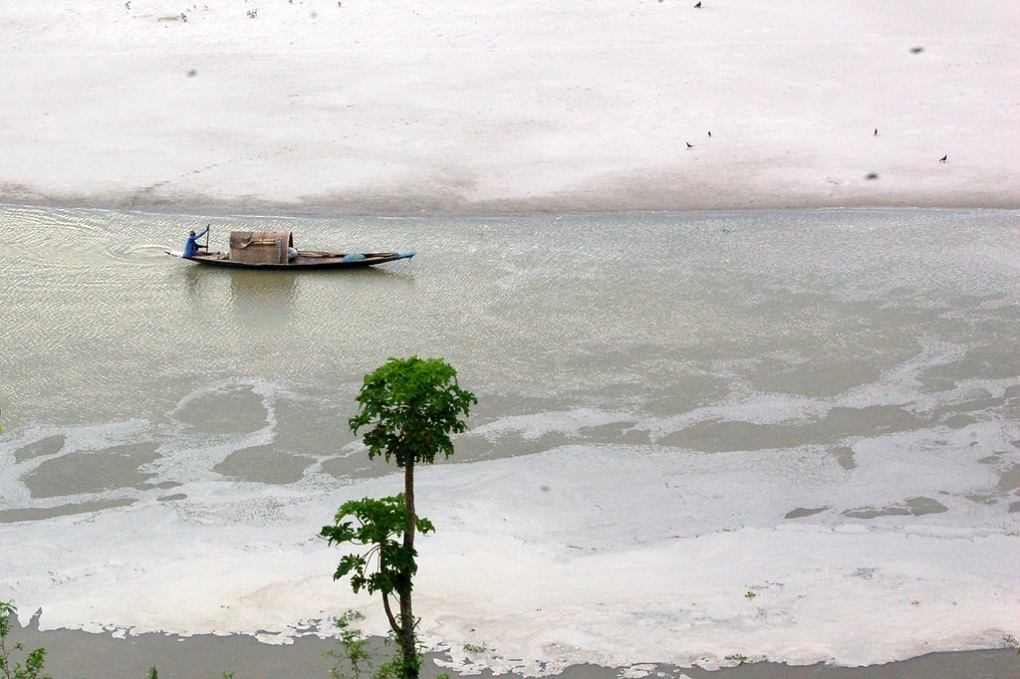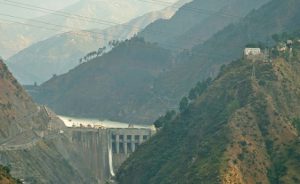When India’s prime minister Manmohan Singh and China’s president Xi Jinping held their first meeting on the sidelines of the latest BRICS summit in Durban, the one specific item on Singh’s agenda was the need for a joint mechanism to look at China’s hydropower projects on the Brahmaputra, the river called the Yarlung Zangbo in China.
Clearly aware of the many fears these projects raise in India, Xi was quick to assure Singh that China was aware of its responsibilities towards lower riparian countries and that he would ask his officials to consider a joint mechanism.
The conversation has now been eclipsed by the row over Chinese soldiers building a structure 10 kilometres into what India considers its territory in Ladakh, near the western edge of the border between the two countries. Multiple meetings between military officials have failed to resolve the standoff at the disputed border, though both countries have so far been careful not to let the matter escalate.
Meanwhile, Manmohan Singh and India’s water resources minister Harish Rawat have repeated that the Chinese projects will not reduce water flow in the Brahmaputra, as they are run-of-the-river hydropower projects. But the Indian government’s own panel of experts has expressed worries the projects will reduce water flow in the Brahmaputra, especially in the lean season.
A few weeks before Singh’s meeting with Xi, the expert panel asked the government to intensify monitoring of construction projects by China on the Brahmaputra. It also expressed the fear that similar projects may come up at the “Great Bend” the Brahmaputra takes just before it flows from China to India.
Fears and old habits fester
Such fears are becoming more accentuated, but they are not new. Independent experts studying the Brahmaputra as well as other transboundary rivers around the world are now convinced that any agreement based on fears on what the upper riparian country may do can be a zero sum game at best. The entire way policymakers look at a river and a river basin must change, they argue.
Rohan D’Souza of New Delhi’s Jawaharlal Nehru University says a river must be seen as a “collection of pulses, not a quantum of water flows.” Sociologists who study the people dependent on the river waters, ecologists who study fish and other forms of life in the river all say that the “hydrocracy” – the water bureaucracy – that has dominated official discussions is like the blind person who touches an elephant’s tail and thinks he knows the entire animal.
Policymakers in both India and China defend their own projects in the Brahmaputra basin, saying they are run-of-river hydroelectricity generation projects that will not affect the total water flow – a part of the river is being diverted to run past electricity generating turbines, and then the water is going back to join the river.
But a river is not a uniform flow of water. It flows in pulses that change during the day and definitely during the year. For a dependable electricity supply, engineers have to smooth out the pulses and change them to suit power demand during the peak hours.
But the fish downstream need those pulses and any change affects them adversely, says Sangeeta Boruah of the University of Dibrugarh, on the banks of the Brahmaputra. Independent economists point out that this has a devastating effect on the fishermen downstream, an effect already being seen in the lower reaches of the Brahmaputra in Assam, as the first of India’s 168-odd projects in the upper reaches are being built.
Rivers are ecosystems not water pipes
The essential problem, say the independent researchers, is that the “hydrocracy” sees a river as a water pipe, whereas it is actually so much more, a complete living ecosystem. D’Souza says “rivers are full of muscle, skin and cartilage, which makes a definite case against pure engineering solutions. The transaction cost between megawatts and protein must be computed.” Traditionally, fish has been the main source of protein for people in this and many other parts of the world.
These arguments appear incomprehensible to the majority of hydrologists, power engineers and policymakers. For them, the silt carried in river water is a major nuisance that breaks turbine blades and should be filtered out. For farmers downstream, this silt provides fresh soil. For the fish, it carries their food. Neither has entered official cost-benefit calculations in China, India or any other country. After long agitation by NGOs, the Indian government has now agreed to keep parts of the water flow unaffected as “environmental flows”, but on average that is no more than 20% of the flow.
Independent experts say the only thing that will work is a paradigm shift in how a river is viewed. “Treat the Brahmaputra as a heritage integral to cultures and identities,” says D’Souza. “It’s a civilizational question. Negotiations between two governments will not work because they deal with only a part of the river. What we need are debates and discussions about civilization, heritage, and lived knowledge in the entire river basin.”
Old rhetoric proves hard to shift
None of this has entered the consciousness of Indian policymakers, whose main worry is that China is right now building and planning a number of hydropower projects on the main stem of the Brahmaputra, upstream of the Great Bend. Two run-of-the-river projects are under construction at Zangmu and Jiexu and another is planned at Jiacha.
In a report to a committee of secretaries, the Indian government panel has said these may be followed by projects at three other sites where the kind of construction that is usually related to hydroelectric projects is gathering pace, including four new bridges.
The panel’s report adds India has noticed heightened industrial activity at Nangxian, along with constant improvements in the Bome-Medog road that passes through the Great Bend area. The panel members felt that Dagu and Jiexu, along the main stem of the river, were likely to become industrial centres. All this will need more electricity and water, both at short supply in Tibet. Indian officials complain that there may be about 30 other projects in the Brahmaputra basin, about which China declines to share any information.
Officials in India’s water resources ministry are now studying riparian treaties to decide what they should recommend, first to the rest of the Indian government and then to China. Officials in the ministry said they were exploring options on the basis of bilateral and multilateral environmental treaties and conventions around the world.
Demands downstream in Bangladesh
A major problem the bureaucrats have is that the Brahmaputra does not end in India – it flows on to Bangladesh. India is now building and planning just the same kind of projects on its stretch of the Brahmaputra as China is doing upstream. So if India can demand a joint mechanism with China, Bangladesh can demand just the same with India, something that bureaucrats in New Delhi are loath to concede. In fact, due to this fear India is now hastening construction in the 800-megawatt Tawang 2 hydroelectric project on the Brahmaputra, plus many smaller projects in the basin.
India’s way of assuaging fears in Bangladesh is to offer the lower riparian country a share in the electricity generated by a project, in one case even offering a shareholding in the firm set up for the project. Indian officials have also been taking their Bangladeshi counterparts upstream in the Brahmaputra and showing them how these projects are supposed to reduce the prospect of flooding in both countries. They have also been discussing how they can do some joint dredging in the river and build embankments together.
But Bangladesh will continue to press for a multilateral agreement, as its visiting commerce minister Mohammed Habibur Rahman Khan made clear during his recent visit to India.
So at the level of politicians and bureaucrats, all countries are stuck in the old rhetoric. It is now clear that unless the farmers and the fishermen, the factory owners and the workers, those who row the ferries and those who ride them, are all involved in the conversation, there is little chance of getting any meaningful agreement. And the situation will keep getting worse as long as rivers in the basin are seen as water pipes rather than living ecosystems.
Independent experts see only one way out. As D’Souza puts it, “The principles and premises of riparian treaties need to be re-organised. River basins must be seen as interconnected and integrated ecosystems where all stakeholders must have a say.”



